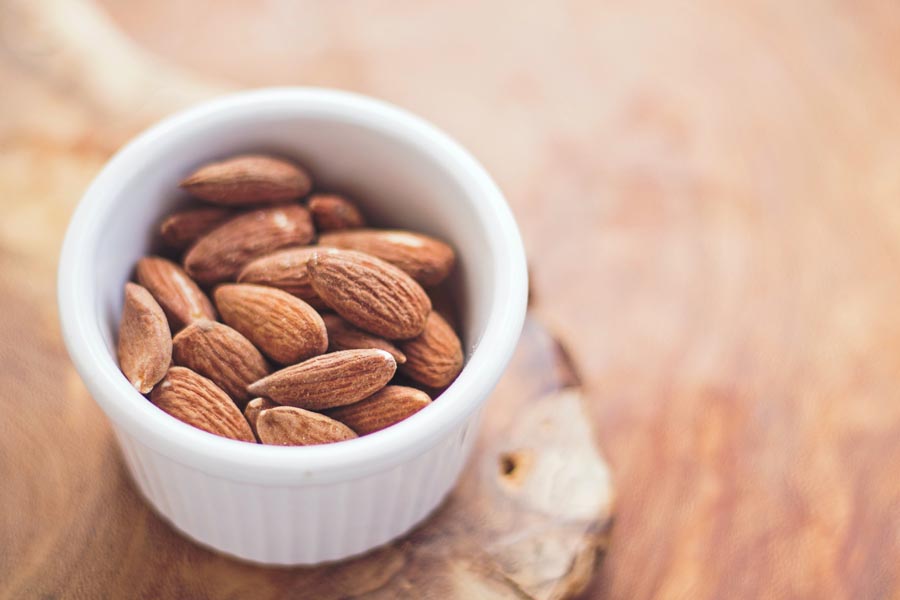Why nutritionists are crazy about nuts
Mounting evidence suggests that eating nuts and seeds daily can lower your risk of diabetes and heart disease and may even lengthen your life.
Published: June, 2017
If your idea of healthy eating was formed a few decades ago, it may be hard to shake the notion that you should avoid nuts, which are high in calories and fat. But new evidence has overturned that assumption. In fact, a recent analysis of the nation’s eating habits and health outcomes suggests that eating too few nuts and seeds is associated with an increased risk of dying from cardiovascular disease or diabetes.
For that study, in the March 7, 2017, Journal of the American Medical Association, researchers from the Tufts Friedman School of Nutrition Science and Policy relied on a model that used data from scores of observational studies on diet and health, including the National Health and Nutrition Examination Surveys, which provided detailed information on Americans’ eating habits over the decade ending in 2012. They estimated that in 2012, over 300,000 deaths from heart disease, stroke, or type 2 diabetes — about 45% of all deaths from those conditions — were associated with eating either too much or too little of 10 nutrients.
Specifically, the association existed with too low a consumption of fruits, vegetables, nuts and seeds, whole grains, polyunsaturated fats, or seafood containing omega-3 fatty acids, and too high an intake of unprocessed red meats, processed meats, sugar-sweetened beverages, or sodium. Low nut consumption — defined as eating fewer than five 1.5-ounce servings per week — was associated with 8% of deaths, the percentage also associated with eating too much processed meat.
Those findings add to evidence from a 2013 study conducted by Harvard researchers. “We found that people who ate nuts every day lived longer, healthier lives than people who didn’t eat nuts,” said study co-author Dr. Frank Hu, professor of nutrition and epidemiology at the Harvard T.H. Chan School of Public Health.
Dr. Hu and colleagues analyzed data from 120,000 participants in the Nurses’ Health Study and the Physicians’ Health Study. All answered questions about their diets at the beginning of the studies in the 1980s and then every two to four years during 30 years of follow-up. The researchers classified the participants into six categories that ranged from never eating nuts to eating them seven or more times per week. The nut eaters were less likely to die of cancer, heart disease, and respiratory disease than those who didn’t eat nuts. Over all, they were 20% less likely to have died during the course of the study. Moreover, the effect was “dose-related.” In other words, the more nuts they ate, the lower their risk.
| Nut and seed sources of healthy fats | ||||||
| Nuts and seeds contain mixtures of fats, including monounsaturated fatty acids, polyunsaturated fatty acids, and omega-3 fatty acids, along with saturated fat. Although saturated fat is generally regarded as a less healthful form of fat, it is more than balanced out in plant-based foods by the higher levels of healthy fats. | ||||||
| Food (1 ounce) | Calories | Total fat | Saturated fat | Monounsaturates | Polyunsaturates | Omega-3s |
| Almonds | 169 | 15 g | 1 g | 10 g | 4 g | 0 mg |
| Brazil nuts | 185 | 19 g | 4 g | 7 g | 6 g | 5 mg |
| Cashews | 155 | 12 g | 2 g | 7 g | 2 g | 17 mg |
| Chia seeds | 137 | 9 g | 1 g | 1 g | 7 g | 4,915 mg |
| Flaxseeds | 150 | 12 g | 1 g | 2 g | 8 g | 6,388 mg |
| Hazelnuts | 181 | 18 g | 1 g | 13 g | 2 g | 17 mg |
| Hemp seeds | 160 | 12 g | 1 g | 1 g | 9 g | 2,264 mg |
| Macadamia nuts | 203 | 22 g | 3 g | 17 g | 0 g | 55 mg |
| Peanuts | 164 | 14 g | 2 g | 7 g | 4 g | 1 mg |
| Pecans | 199 | 21 g | 2 g | 12 g | 6 g | 278 mg |
| Pine nuts | 190 | 19 g | 1 g | 5 g | 10 g | 32 mg |
| Pistachios | 157 | 13 g | 2 g | 7 g | 4 g | 72 mg |
| Pumpkin seeds | 153 | 13 g | 3 g | 4 g | 6 g | 51 mg |
| Sesame seeds | 160 | 14 | 2 g | 5 g | 6 g | 105 mg |
| Sunflower seeds | 163 | 14 g | 2 g | 3 g | 9 g | 19 mg |
| Walnuts | 185 | 18 g | 2 g | 3 g | 13 g | 2,565 mg |
| Source: USDA National Nutrient Database for Standard Reference. |
Why nuts are good for you, after all
Nuts haven’t changed; they are still high in fat and in calories. However, research has determined that certain fats common in nuts — mono- and polyunsaturated fats and omega-3 fatty acids — actually reduce the risk of cardiovascular disease. The FDA now allows nut producers to claim that a diet that includes 1 ounce of nuts daily can reduce your risk of heart disease. Nuts have also been shown to do the following:
Improve cholesterol profiles. The unsaturated fat in nuts helps to lower LDL (bad) cholesterol and raise HDL (good) cholesterol.
Prevent arrhythmias. One type of unsaturated fat — omega-3 fatty acids — appears to prevent the development of erratic heart rhythms.
Reduce blood clotting. There is some evidence that omega-3s may work much the same way as aspirin does to keep blood from clotting.
Relax blood vessels. Nuts are rich in arginine, an amino acid needed to make a molecule called nitric oxide that relaxes constricted blood vessels and eases blood flow.
Raise levels of glucagon-like peptide 1. This hormone helps to control glucose levels and to lower insulin levels in people with prediabetes.
Contribute to satiety. Nuts are rich in fat, fiber, and protein, all of which are more likely than foods high in carbohydrates to make you feel full. For that reason, people who eat nuts regularly — especially those who substitute nuts for animal fats like butter and bacon — are less likely to be obese than those who don’t.
| How to go nuts Like other healthy foods, nuts can be stripped of many of their nutrients during processing, so raw or dry roasted nuts are your best choice. Avoid blanched peanuts and almonds, which lose beneficial antioxidants and phytochemicals when their skins are removed. If you’re new to nuts, the following suggestions should help you get the recommended 1.5 ounce of nuts or seeds per day: Snack on them. It’s easy to grab a handful of nuts or a packet of sunflower seeds. If you’re buying packaged nuts or seeds — either raw or roasted — look for those with no sodium, sugars, or other additives. If you want to try flavored nuts or seeds, try sprinkling turmeric, cinnamon, or cocoa powder on raw nuts or seeds and roasting them at 350°F. How long they should stay in the oven depends on the size and amount of nuts or seeds you’re roasting; sunflower seeds take less time to roast than almonds do. Spread them. Many types of nut and seed butters are available at supermarkets and specialty stores. Again, it’s important to read the labels carefully to avoid added salt or sugar. Scatter them. Seeds and chopped nuts add flavor and texture to salads, sandwiches, and whole-grain breakfast cereals. Substitute them. Replacing red and processed meats with nuts can have double benefits — reducing the risk associated with eating too much meat as well as the risk linked to consuming too few nuts. Experiment with nuts in place of meat in main dishes. You can find recipes for nut loaves and casseroles in vegetarian cookbooks and on websites like that of the magazine Vegetarian Times (vegetariantimes.com). |

